Butterflies in Our Backyard
Local wildlife photographer P. Chris Christofferson explains why our butterflies are becoming more scarce, and what we can do to change that. Her luscious photographs of local varieties may have you planting your own butterfly garden tomorrow!
- story and photographs by P. Chris Christofferson

The Internet sites below are fascinating and helpful to understand how we can all do more to help them repopulate—not only by planting their preferred nectar flowers, but by also planting hosts for egg deposits.
Each of these sites has general butterfly garden facts, with links to more specific information:
The eye of a butterfly is compound and immobile, but even though it's near-sighted, it can see a wide range of color. It is particularly attracted to red, orange, yellow, purple, white, and some pinks planted in the sun or partial shade. The butterfly favors compound flowers with multiple blossoms and short nectar tubes for its proboscis, especially those with nectar comprising up to 20% sugar. Placing flat rocks in the garden is recommended so the butterfly can rest and warm its wings in the sun. Who knew! The literature notes, and I’ve verified in my gardens, a few of their more favored flowers: bottlebrush, bougainvillea, azalea, honeysuckle, goldenrod, penta, sunflower, poppy, coneflower, jasmine, lantana, milkweed, ruella (Mexican petunia), zinnia, butterfly bush and blue salvia (last four huge favorites in my gardens). They seem to spurn my roses, petunias, impatiens and vinca, however. 
All butterflies transform through the same life cycle:
The egg hatches to a caterpillar, which eats the eggshell's chorion (or membrane) first. Then, the caterpillar starts devouring its host’s leaves, going through stages of growth, called instars. The number of stages depends on the species. Then it pupates within a chrysalis and emerges, astonishingly, as a glorious mélange of color. A caution: spraying insecticide in the garden, even the surrounding yard, can kill the feeding butterflies and caterpillars. Pesticides do much more damage than any natural butterfly predator. There are five butterflies I’ve photographed in my yard and researched: Clouded Sulphur, Eastern Black Swallowtail, Giant Swallowtail, Gulf Fritillary and Monarch. The Monarch Butterfly
The yearly migration of the king of butterflies from Canada to Mexico has begun! The two visiting since mid-August are, hopefully, heralds of more on the way.
Last year, this monarch pictured is the only one which came to feast on my nectar gardens and milkweed. Milkweed is literally the lifeblood for the continued existence of this butterfly species. The plant is the only host on which the monarch will lay its eggs and only leaves its caterpillars will eat! I had internet shopped several kinds of milkweed seeds to be this year’s hosts, but the plants stayed so puny, I bought this year’s milkweed plants from our local nurseries. Monarchs are the only butterfly to fly a migration pattern like some birds. It is an amazing story of a 3000 mile one-way journey flying north and eastward in the spring from a very constrained area in mountains of southern Mexico and then three generations later arriving in the northern U.S. and Canada. Then, for some monarchs, a single, fragile, almost weightless fourth generation migrates the entire 3000 miles back to Mexico in the fall while others overwinter in the deep south! The fourth generation nectars heavily and can actually gain weight during the migration south by storing fat in its abdomen which must sustain it for months while overwintering in the trees in that one locale in Mexico. In the spring, the first migrating monarchs from Mexico mate, and in March and April deposit the first generation on a milkweed. Four to five days later, the egg hatches to a larva, caterpillar. After about two weeks of eating the milkweed host and growing through three to four instars, it is full grown and finds a stem or leaf to attach itself to with a silk thread forming a pupa. Then the pupa undergoes metamorphosis inside the chrysalis for about 10 days and emerges as the king of butterflies! 
Ever flying northward, that second generation feeds on flower nectar for only about two to six weeks, mates, lays its eggs and dies. Also always flying northward, the second generation, born in May and June, and the third generation, born in July and August, go through this same short life cycle. The fourth generation can be astoundingly different, and can live as long as nine months!
From the summer breeding grounds in northern U.S. and Canada, some of the monarchs can travel the full 3000 miles back to the mountains of Mexico, roost through the winter months and lay the next generation of eggs before dying for the first leg north - again. However, the generalizations cited in the articles are not universally true. In speaking with Mr. Scott Peyton at the Miss. Museum of Natural Science in Jackson, I learned that the fourth generation may lay eggs on milkweed along the coast in August and September, then die. Some of the emerging monarchs in September and October overwinter here and south Florida or continue the migration southward to the mountains in Mexico. That information answered my puzzling question of why should we have milkweed planted here for the migrating fall monarchs. He relayed a conversation he had with Dr. Bill Stark at Mississippi, who has tagged some newly emerged adults in Mississippi in the fall and recaptured them overwintering in Mexico. Mr. Peyton had generously researched some of my other questions and provided this link, Project Monarch Watch, which is an incredibly rich source material. Their map of the fall migration is also quite informative. Alarms are going off in scientific communities about the great peril for the continuance of this marvelous monarch migration. The U.S. Fish and Wildlife Service has stated that from one billion monarchs in the 1970s there are only about 30 million remaining.
Known killers are the millions of total lost acres of milkweed from highway building, urban sprawl, and mammoth areas of land under cultivation in the Midwest with concomitant insecticide and herbicide spraying. The current drought in the Midwest is also taking its toll.
The Fish and Wildlife Service has formed a partnership with two private conservation groups, The National Wildlife Federation and National Fish and Wildlife Foundation, to start planting milkweed in any open space possible and giving seeds to everyone interested. The U.S.Fish and Wildlife Service is distributing seeds in refuges and in a 200,000 acre corridor along Interstate 35 from Texas to Minnesota, the path of 50% of the migrating monarchs. Some organizations are giving away free milkweed seeds to schools and non-profits. St. Louis and Charlotte are two cities declaring themselves sanctuaries. Florida is urging the planting of milkweed. And some local citizens are investigating what it would take for Bay St. Louis and Waveland to be declared Monarch sanctuaries. There are some studies which support the position that even though the numbers of the overwintering monarchs in Mexico are drastically reduced, the summer butterfly numbers are rebounding. One theory is that global warming is pushing the monarch farther north so that the single monarch flight south for the winter is getting just too far for one butterfly, the reason those numbers are in such decline. The scientific community is quite divided about this, though. Regardless, for all of us, let the lasting imprint be: grow Milkweed and feed, feed, feed! Eastern Black Swallowtail Butterfly
The Eastern Black Swallowtail, Papilio polyxenes asterius, may be known by other names such as American swallowtail, parsnip swallowtail, parsley swallowtail, celeryworm swallowtail and caraway worm swallowtail. A bit of lepidopterist trivia: genus name papilio is Latin for butterfly, and polyxenes is from Polyxena, the daughter of Priamos, King of Troy in Homer’s Iliad.
It lives throughout southern Canada, eastern and mid-western to the Rockies and southwest into Arizona and northern Mexico, in “uplands and wet areas-prairies, fields, flatwoods, pine savannas, roadsides, weedy areas and gardens.” The undersides of the male and female wings are identical, but the larger female has a more prominent powdery, iridescent blue on the upper surface of the hind wings. I think this one I photographed must be a female. The life cycle of the Eastern black swallowtail has the same four stages as all butterflies: eggs to caterpillars (larvae), to pupae in the chrysalis, to butterfly. This spectacular time-lapse slide show follows the growth of the chrysalis and the emergence of the butterfly. 
They lay their eggs singly on specific host plants (listed in the referenced article), including the very poisonous spotted water and poison hemlock. So that I can support a generation, next year I’m going to plant some of their more agreeable hosts like parsnip, Queen Anne’s lace, celery, dill, parsley or sweet fennel.
According to the article, the egg stage lasts four to nine days, larval stage ten to 30 days and pupal stage nine to 18 days, except for the overwintering pupae of third generations in the south. The Eastern black swallowtail has three instars in the caterpillar stage, and the pupa in the third generation spends the cold months hanging in a brown, wrinkled paper skin chrysalis until the spring warmth to emerge. How amazing the genetics change for repopulation! Butterflies utilize mimicry of their coloration as a defense against predators like wasps, but the Eastern black butterfly caterpillar has evolved to brandish a superb weapon. If threatened, it rears up and waves horn-like organs, osmeterium, attempting to smear the predator with a chemical repellent! Clouded Sulphur Butterfly
The Clouded Sulphur butterfly, Colias philodice, used to come through in groups of ten or so, but no more. This year only one has visited so far.
A Clouded Sulphur is distinguished from a regular Sulphur by its dark border. They fly close to the ground in open areas over yards and fields, roadsides and stream beds. A female Clouded Sulphur lays one egg on its host plant, which can be black locust, clover, asters, peas, vetch and alfalfa. One female lays several broods (batches) each year. If it gets cold before the butterfly emerges from the chrysalis, it will overwinter, with the Clouded Sulphur emerging in the spring from March through September. Given clover is everywhere in Waveland, I don’t understand why the numbers of this butterfly have dropped so precipitously in my gardens. This article has a great picture of what I often saw, with five or six of them grouping, but didn’t know the phenomenon had a name. Puddling. They group together on mud puddles, animal poop, or in my case, wet mulch, and drink the moisture. I so miss their happy dances! Gulf Fritillary Butterfly
A lot of Gulf Fritillary butterflies, Agraulis vanillae, used to come to my gardens every summer. In 2015, I haven't seen any yet.
The Gulf Fritillary is supposed to be common across the extreme southern parts of the United States, as well as Mexico, and Central and South America. It gets its name from crossing the Gulf of Mexico. In the U.S., during the spring, adults migrate northward in the southeast into temporary breeding grounds. Then, late summer and fall, they migrate southward and overwinter in frost-free areas. The females are larger and darker than the males, but I've either seen only one sex, or just can’t tell the difference. They are so beautiful with the distinctive iridescent silvery sheen on the undersides of the wings. 
The eggs are laid singly on its host plant, which I learned is only the maypop or other Passionflowers. The caterpillar, which emerges from the yellowish egg after four to six days, is really scary looking, bright orange with black spines running the length of its body, but the spines are soft to the touch. So the literature attests, but I’m not touching it!
First thing the Gulf Fritillary caterpillar does, like all of them, is eat the crunchy eggshell, before denuding its host Passionflower. However, some red and blue passionflowers are toxic to the Gulf Fritillary, and the caterpillars die after eating these. An evolutionary hiccup, it seems to me! The caterpillar, larva, grows during the course of about two weeks, shedding its skin (exuvia) and eating it, through three instars. The Gulf Fritillary caterpillar travels from the host plant and pupates into a distinctive J position. It’s described here and pictured, looking like a brown, dried up leaf, a great protective mimetic. The caterpillar is toxic to birds, which are warned away by its coloration. But some wasps and some larger caterpillars will eat them. Giant Swallowtail Butterfly
The Giant Swallowtail Butterfly, Papilio cresphontes Cramer, is spectacularly beautiful and my personal favorite. Last August, I had the most delightful day photographing three Giant Swallowtails as they danced together through the sky and fed in my gardens, just as I had planned it!
The Giant Swallowtail is truth in advertising with forewing span averaging 14–17 cm, and with uniform male and female coloration as far as I've read. The Giant Swallowtail ranges from Ontario down to the southern states, Caribbean, Mexico and Central and South America, and west to the central plains and Rockies. An intriguing fact is that Giant Swallowtails court and copulate in the afternoon. The Giant Swallowtail lays its eggs on common rue, hoptree, gasplant, torchwood, and most citrus species. It’s considered a pest to some as the larvae, caterpillars, can quickly exfoliate a small citrus tree. My husband and I, however, are delighted to sacrifice our small lime trees as hosts for their eggs. 
When the eggs hatch, they evolve through five instar stages of larvae and resemble bird droppings as protective mimicry. I never saw them on our limes because, unfortunately, orange and black insects ate the eggs. Figures 8,10 and 11 on this site are of a mature larva resembling a snake in a striking pose. And with the osmeterium everted like a forked tongue, the photos are really striking. The photos of the pupae in the chrysalis attached to their surfaces by a silken thread are great examples of evolutionary protective mimicry. I haven’t seen one, yet.
Predators of the larvae are certain parasitic wasps, flies and even birds. But its coloration is a protectorant as well as their osmeterium glands grown in the fourth and fifth instar. A toxic glandular secretion, which smells like rotten eggs, is aimed at small predators like ants and spiders. I live in Waveland, off Nicholson. I would love emails from Waveland or Bay St. Louis residents with location information, and your observations of the number of these or other butterflies in your yards this summer as compared to previous years. P. Chris Christofferson, P. Chris Photos, [email protected] Sycamore House Sushi Night
Innovatively prepared steaks and seafood have made the Sycamore House one of the most successful fine dining establishments on the Gulf Coast, but each Wednesday, a very special menu offers... sushi? Find out why Sushi Night at the Sycamore has become a favorite local tradition.
- story and photographs by Ellis Anderson
The menu offers two different kinds of sushi. One is maki sushi, which is the roll most people have at least sampled. Fillings and a special sushi rice are rolled up inside a sheet of toasted seaweed, called nori. Sycamore House offers nigiri sushi too, which is a slice of shellfish or fish draped over a mound of rice.
While die-hard sushi aficionados may go for the nigiri, it's probably a safe bet that most Sycamore House guests on Wednesday night are there for the maki rolls. Even the lowly California roll takes on a new glamour. While it's the norm at most restaurants to use the imitation crab meat in rolls, the ones at Sycamore House are made with the real McCoy, wrapped up with avocado, radish and cucumber. The crawfish roll pairs the cajun delight with asparagus, cucumber and a surprising chipotle boursin sauce. Salmon pairs up with caperberry aioli, and the shrimp get a kick from a spicy mayo. There's even a BBQ shrimp roll. Really. Made with the restaurant's signature recipe at the heart. And they're generously portioned as well. The SycHouse roll leaves nothing to the imagination: everything you can think of (fresh crabmeat, crawfish, yellowfin tuna and asparagus) is stuffed inside and then tempura battered and fried. The queen of rolls though has got to be the Surf n Turf: shrimp and veggies on the inside, buttery tender steak on the out.
Chefs Stella LeGardeur and Michael Eastham opened the Sycamore House in 2002, in one of Old Town's historic gems, graced by huge live oaks, front and back. The restaurant has built a stellar reputation through the years with loyal customers who drive from the culinary capital of New Orleans to enjoy a meal.
The sushi is Stella's baby, although it was one of the food specialties both studied while training at the Culinary Institute of America in New York. Several years ago, the couple were casting about for something to jazz up mid-week in the restaurant. The sushi idea came up since at the time there were few ethnic food offerings in the area. Now there's a loyal following of fans that return each Wednesday. Reservations aren't necessary, but it's always best to make one: call (228) 469 - 0107.
Katrina 10th Anniversary Commemoration
Click here to purchase high resolution prints
Habitat's 202nd Anniversary House Build
Summer Fest - August 22ndAround Town in August!
Personal Flotation Devices - what you don't wear may hurt you.
We have lots of excuses not to wear them, but this statistic may change your view: eight out of ten boating deaths could have been prevented. Chief Pam San Fillippo makes a persuasive case for life vests.
And there’s the problem first responders see all the time: someone just doesn’t think. We forget how dangerous water activities are, and we don’t think before we act. Out on the water “not thinking” is a recipe for disaster, and anyone who has lived near the water has seen or heard of water-related accidents and deaths. I know I sure have, and I can tell you most of them just didn’t have to happen, especially the ones that involved drinking and boating.
Did you know that 80% of boating deaths could have been prevented if a life jacket, or “PFD” (personal flotation device) had been worn? Yes, 8 out of 10 deaths, preventable by simply wearing a life jacket. That’s a statistic that’s hard to argue with, yet we use every excuse imaginable for not wearing one: “They’re uncomfortable,” “They’re hot,” “I grew up on the water; I can swim like a fish.” Sorry, no excuses accepted. PFD’s have come a long way. They come in all shapes and sizes, and some are even like collars instead of a jacket. Here are a few do’s and don’ts that can help keep your time on the water safe and enjoyable:
Read about pet safety on the water in this month's Puppy Dog Tales column!
Southgroup Insurance - Angelyn Treutel-Zeringue
How irrepressible optimism and leadership values have helped build the largest Independent Insurance company in the state.
- story by Ellis Anderson

A wall filled with awards testifies to her effectiveness as a leader and as a business owner. Since 1998, her insurance firm has been recognized as a Best Practices agency and is among the top 100 privately held Independent Insurance Agencies in the nation.
She’s been tapped as one of the Ten Leading Business Women in the state, and is nationally recognized as one of the “Elite Women of Insurance.” Rotary International named her a Paul Harris Fellow and Hancock County has honored her as Citizen of the Year. While Angelyn holds ten different licenses, ranging from insurance to CPA to real estate, she credits more than her education for her success. “At one point, my family had a farm,” she says. “As a girl, I was driving tractors and hauling feed sacks and riding horses. Even now, I’m not afraid to get my hands dirty. I won’t ask anybody to do something I’m not willing to do.” Born in New Orleans, the entrepreneur grew up in several places across the South due to her father’s business concerns. Angelyn made the most of each home, building lifelong friendships along the way. After living in Covington and Nashville, the family moved full time to the Mississippi Coast, where the young woman shone as valedictorian of Our Lady Academy. At University of Mississippi, she majored in accounting, also graduating with honors. Then for the next sixteen years, she served as Senior Financial Supervisor and CPA for ExxonMobil Corporation in New Orleans. While her home and family remained on the coast, Angelyn commuted daily to the city. When an opening came up in the family’s insurance office, she grabbed the opportunity to make a change for the better. Weary of corporate life and commuting, she opted to work in a local environment where she'd be closer to her two sons. Once she was based in the Bay, Angelyn began to work with the local schools and help with educational fund-raising efforts. She remains an active volunteer and frequently spearheads community projects. For instance, this past spring, SouthGroup Insurance Services, which sponsors and hosts an annual Make-A-Difference 5K Race in Ridgeland, presented a check to Friends of Children’s Hospital in Jackson for $35,000 from the proceeds of the 2015 race. In the past five years, they’ve donated more than $100,000. She sees insurance as yet another way to serve her community. "It’s a really rewarding career,” she says. "You can help people get the right coverage, save money and if there's a major catastrophe, help them rebuild their lives." Angelyn has now been working in the insurance industry for nearly two decades. In 2011, she helped start SouthGroup, a locally owned and operated insurance franchise. SouthGroup has 24 offices throughout the state. As part of a franchise, offices benefit from a centralized payroll and technology sharing. “We make our computer systems work for us. The automation gives us time to do the things we’re supposed to do, like service and take care of our clients.” With more than 170 employees now, SouthGroup has become the largest independent insurance agency in the state. That's gives the company a big edge when it comes to negotiating in insurance markets. “Because of our size, we’re able to access the best markets and the best rates,” Angelyn says. “That’s why business is booming.” But she cites her employees as the key to SouthGroup’s success. Optimism is one of five core values that is a common focus. The others are integrity, excellence, innovation, and trusted partnerships. Angelyn leads by example with her own irrepressible smile, believing that optimism is contagious. Each employee is held to a high standard, but once they're working with the company, “you’re family.” Indeed, two of Angelyn's staff actually are family. Her mother, Loislyn Scardino, works with Angelyn in the Bay St. Louis office, while her youngest son, Alex, works out of the Biloxi office. Meanwhile, life — as well as business — on the coast is good. “We work really hard on a regional and national basis to get the message out how great things are in Mississippi. We have such a hidden treasure here. And people are finding out about it."
This month, Waveland Alderman Jeremy Burke reports on the new playground, the police station construction and Wavealnd being named a Tree City USA!
Young at HeART
It turns out that some of the most vibrant artists in the community can be found at the Hancock County Senior Center, where "expressing yourself" is a daily event.
- story and photos by Karen Fineran
The Hancock County Senior Center, established in 1972, provides companionship for Hancock County’s active seniors in a comfortable, informal and fun social setting. The Senior Center contains a dining area, a recreational TV and reading lounge, and several arts and crafts studios. The Center provides nutritious hot breakfasts and lunches and daily transportation for seniors from their homes to the Center and back, as well as to daily or weekly errands like the grocery store, pharmacy, bank, post office, bill paying, doctors’ offices, and even group field trips to casino buffets or other restaurants.
Since the first year of its existence, the Senior Center has operated an arts program for its seniors, providing instruction and materials for a variety of arts and crafts, including oil and acrylic painting, ceramics, quilt-making, crocheting, and various seasonal crafts. The program is run with county funds, funds from Bay St. Louis and Waveland, donations of supplies and materials from private donors, and typically a small donation (usually $1 per month per class) from participating seniors. The class instructors are Senior Center staff members and outside volunteers.
The majority of the seniors at the Center – approximately 40 to 50 persons spend most of their days there – actively participate in the arts program, and many of them like to come every day. Typically, they have had little or no art training or education prior to beginning classes at the Center. That hasn’t hindered their creativity.
At least one long-time program participant has been involved in the Senior Center since its inception. Artist Theresa James, a Galveston native, moved from New Orleans to Bay St. Louis shortly after Hurricane Camille, and fell hard for the Gulf Coast. From 1972 to 1985, she was the Director of the Center’s RSVP (Retired Senior Volunteer Program). After her retirement from that position, she had the time to begin taking the Center’s art classes herself – the first art classes of her life. She dove into the oil painting classes given by her mentor, instructor Carl Baldenhofer (now deceased). Looking up at a painting of Baldenhofer in the studio, James spoke appreciatively of his talent, winsomely recalling how he had inspired her in her painting and taught her the oil techniques that became part of her distinctive style. James paints colorful folk art depictions of jazz funerals, shrimp boats, cotton fields, and other iconic southern and New Orleans images. In earlier years, as a member of ARTS, Hancock County, James sold her paintings throughout Bay St. Louis galleries and sometimes in New Orleans. While James says that she no longer paints (as of the last several months), items of her work are displayed at Maggie May’s Gallery in Bay St. Louis. James’ favorite painting (sold long ago) is her “Blue Roofs,” which she painted of the tableau of vivid blue-tarped roofs in Bay St. Louis just after Hurricane Katrina.
Another favorite at the Center, artist Lorraine Keyser has only been painting for about three years, and had no art training or experience prior to beginning classes at the Center. She said that the Center has made a huge difference in her life and that it allowed her to come out of her shell. “Now I know everyone. It’s like a family.”
Today, her beautiful oil paintings of the natural wildlife of the Gulf Coast, such as the heron and pelican shown below, are incredible in their likeness to life and their intricate attention to detail. Though her paintings are not currently for sale, some of them have been displayed at the Mandeville Craft Show, and two more of them will be displayed there in October. Other seniors at the Center can be found chatting amiably around tables, amid piles of cloth squares, bent over their quilts and crocheting, or pouring clay slip into molds, or painting whimsical green-ware forms for ceramic firing. Arlene Johnson, the Hancock County Senior Center Director since 2001, has been with the Center since 1983, when she started as Program Specialist and ceramics instructor. A certified ceramics teacher, airbrush artist and porcelain doll instructor, and an avid painter herself, Johnson has been involved in the arts most of her life. The arts program at the Center, Johnson explained, is important to the seniors because it is the fulcrum of their social life and gives them the quality of life and companionship that they may not necessarily enjoy at home. The seniors enjoy seeing their friends at the Center every day, working on projects together, dining together, and often giving the art pieces that they make as gifts to their family, friends and caregivers.
In August 2005, when Hurricane Katrina tore up Bay St. Louis and most of the Gulf Coast, the Center’s arts program was not interrupted for long, though the Center did (inadvertently) become an emergency shelter for Hancock County.
In a breathtaking story, Johnson described the days and weeks after she had decided to ride out the storm at the Center so that she could be on hand if anyone needed her. Though the seniors themselves were evacuated before the storm arrived, a large number of people from the surrounding neighborhoods swarmed into the Center as the flood waters rose. The flood waters rose to the top of the back door step but did not infiltrate the building. In the following days, police cars and school buses began dropping more and more people off at the Center to seek shelter. For weeks, more than 170 people from all over the county, including very aged seniors, other adults, children, teenagers and babies, crowded into the small hallways and rooms of 601 Bookter Street, sleeping on the bare floors, and waiting in desperation for food, ice, blankets, clothing, Pedialite and other supplies that were dropped off sporadically by volunteers. Soaked and frightened survivors who had been rescued from the flood waters were dropped off at the center wearing only rags, and sometimes still the ropes that had saved them. The building had electricity because of its generator, but the toilets could only be flushed by occupants with bags and buckets of the flood water from outside. The Center’s van was taken out periodically to drive around town foraging for food, supplies and other survivors.
Johnson’s voice was thick with emotion, and she was visibly shaken, as she described how she slept upright for days in a chair near the doors so that she could keep a watch out for confused residents trying to leave or possible intruders trying to enter. Though her own home in town had been flooded and undeniably required her attention, she stayed at the Center because “with so many people under my care, this was where I needed to be.” She still is overwhelmed with gratitude for the volunteers who poured into the community after the hurricane, eventually permitting coast residents to surmount the ordeal and rebuild the community. She shows me an American flag that was hanging outside the Center during the storm, finding a message of hope in its blue field of stars, which remained completely intact, despite the red and white stripes incredibly having formed a solid braided coil from the punishing winds.
For eighty-eight days, the Senior Center served as a makeshift shelter in this fashion, until other places were found for the exhausted inhabitants. Within that timeframe, within the first three months after the storm and before the refugees had moved out, the Center resumed its function of providing hot meals, art classes, transportation, recreation, and shelter to the seniors during the daytime hours. The staff simply was not going to let the seniors go without the encouragement and support they needed during what must have been for many the hardest time of their lives. The Hancock County Senior Center is located at 601 Bookter Street, at the corner of Old Spanish Trail and Bookter, and is open Monday through Friday from 7:30 a.m. to 3:30 p.m. The program is open to all residents of Hancock County who are 60 or over and who are self-sufficient. (Johnson pointed out that even temporary residents in Hancock County, such as those who may be staying with family or friends here for a few months, are welcomed.) Volunteers are also welcomed if they are interested in teaching classes or otherwise assisting the program. For more information, call the Senior Center at 228-467-9292 or pop in at 601 Bookter to ask about signing up.
Mix in an all-American holiday, a community seafood festival, and a powerful sense of place and you've got a wedding that outshines the fireworks!
Annette Spotorno + Cory Jordan
July 4th, 2015
Dr. James Mahler
A "country boy" turned molecular science researcher turned small-town veterinarian? Meet Dr. James Mahler of Bay Animal Clinic, this month's Good Neighbor!
- story by Pat Saik, photos by Ellis Anderson Touchdown for the Cleaver Community Calendar!
Your one-stop-shop for local happenings! One of the most comprehensive community resources on the coast, the Cleaver's Calendar now lists local school sporting events - in addition to live music, festivals, civic meetings, library functions and art events!
- by Ana Balka
We beg to differ! And we want you to know about the exciting possibilities that our calendar holds for you. To browse all of a month’s listings, just go to the calendar. You'll see library, civic, educational, music, special, sports, and arts events in color-coded text. Let’s say that you want to cut through the mass of information. It’s easy to narrow it down! Do you want to see some live music?
Hey, Thursday night trivia at the Ugly Pirate! Whoa, band listings for the casinos!  Calendar Manager Willard Deal Calendar Manager Willard Deal
Of special interest is our sports category, which not only features community sporting events (like Thursday fun runs from the Mockingbird), but—this is huge--schedules of sporting events at Bay High, Hancock High and Middle schools, Bay/Waveland High and Middle schools, St. Stanislaus College, Our Lady Academy, and North Bay Elementary.
“We started last spring with the school sports coverage,” says calendar maestro Willard Deal. “So far there’s football, volleyball, and a few others, like swimming and cross-country. “We would love to cover plays, orchestra and band concerts, and other events at the schools,” Deal says. “As of yet, we’re relying on a variety of sources like print media and other websites to gather information.
"We encourage individuals, organizations, and the schools to keep us posted on a regular basis about upcoming events, to consider us a resource for getting the word out to the community.”
The calendar is a trove of horizon-broadening information. Did you know that the BSL Library hosts a screening of a popular film once a month, which they call “Matinee in the Bay” (September 10, BSL Library)? Or that you could take a basic computer course at the library (several dates are listed)? Go see a play! The Bay St. Louis Little Theater lists its performance dates with us. “Guess Who’s Coming to Dinner” starts September 25th. Get involved in our community’s decision-making processes. Look to the calendar for listings of important civic meetings, such as:
Inform the Cleaver of an upcoming event by clicking the “Suggest Event” button in the bar just above the month. A couple of rules apply: events are limited to those in Hancock County, and we generally list events that are free or whose proceeds go to community non-profit groups. Grand openings for new businesses may be eligible for listing. See the FAQ page for more detail. Deal emphasizes that one should call ahead to any event to confirm date and location. “No one informs us if an event has canceled or if the venue has changed,” he says. So, miss out on cool events no more! Bookmark the Cleaver’s calendar, which we update on a constant basis. Make it your home page, and email the link to your friends. The more people who know about and use it, the better it gets. Water Safety For Your Pets!
This month, Daisy Mae (our columnist and registered seizure-alert dog) explains ways you can keep your animal companion safe while you both enjoy the water.
- by Daisy Mae Delray
At the home pool:
Even pets that are experienced swimmers sometimes panic when they fall into the water, even into a pool where there are steps. Pets too small to use steps should not be allowed in the pool at all. Think of pets and pools the same way you think about children and pools.
At the beach or on your boat:
This is a fun video with well-trained dogs and cats enjoying a day at the beach.

Beaching and being in the pool with your pet is fun and great for bonding. Just be careful, as pets will be pets. They need to be under your watchful eye and control every single minute. Stay dry and keep your tail high! Love, Daisy Mae Paw-Paw's Beach
Clermont Harbor becomes an idyllic Shangri La to a small girl and her grandfather in this essay by Russell Guerin
And Meredith did indeed have some claim to all that she knew as Paw Paw’s Beach, for it was she who showed immediately that she would love it as I did. It was because of her ease at learning what to do with sand, a spoon, and a makeshift bucket that I knew that to buy another place in Clermont Harbor was a good thing to do.
I had had a presence in Clermont since I was born. Even before that event, my father had built a small house back on Forrest Avenue. That was succeeded by a larger house, this one really on the beach. Eventually, it was wiped away by a hurricane known simply as “the ’47.” On the same site, another residence disappeared in Camille, after being severely damaged in Betsy. Post-Camille, a secondhand trailer was considered adequate by my mother—until an arson fire consumed it, that is. And so I went without a place to call home in Clermont Harbor for too many years. Sometimes I would rent a room at the Paddlewheel Motel, on the grounds of what had been the site of my father’s hotel, which had burned the day after Roland and I finished grammar school. The motel afforded me the chance to go fishing once in awhile; at one point I rented a couple of rooms to accommodate all four of my daughters. (I think I had a successful night floundering that time, while they watched TV in their rooms.) Some years, I would stay at the Paddlewheel for a night so that I could be at the Wolfe’s the next morning for our annual 4th of July picnic there. It was at such times that I heard Bo and Julia Wolfe say that they might sell their home on the harbor one day. I think it was one of those things that we just tuck away in the corner of the brain. I did not consciously remember it until one day, when I had a business appointment in Bay St. Louis, and I saw a for-sale sign on a house on Main Street. It then occurred to me that I should check it out, that I could afford to buy something in Mississippi, and that it had been too long since Clermont Harbor. What followed was a call to the Wolfes, and an appointment was made to view the house in a way that I had not previously when visiting for the 4th picnics. Michele and family either came with me or met me there. What I recall is that Michele and Meredith, who was then a year old, came inside with me. Michele liked what she saw, as did I, but it was a hot day and the house was not yet air-conditioned. I continued touring the house and grounds while Michele, Mac and Meredith went to the beach. There, someone produced the spoon and bucket; Mother Nature provided the sand. Meredith did not have a bathing suit, and at times like that, who cares? That was followed by some ten years of lovely memories, like the rabbits and squirrels, the egrets and great blue herons, the turtles, otters, and the alligators. And of course the fish and the crabs, the latter of which we always stored in the pen that hung from our beautiful little roofed pier. I still remember watching Meredith spooning the sand while her diaper absorbed sea water and I knew right then and there that I would buy the Wolfe House. The rest was easy. Paw Paw’s Beach was being baptized with a new name, and it forevermore will be so called. The name I had given it, Harbor View, is still on the mail box, still standing crooked after Katrina, but its real name is Paw Paw’s Beach. The house may be gone, but the memories will last forever. Check out more of Russell Guerin's wonderful writings on his website! The Green House
Looking over the picket fence at the historic Waveland home of Liz Stahler and Kevin Breaux, visitors probably won't notice the addition on the back that makes this cottage into a spacious hub for extended family and friends.
- story and photos by Ellis Anderson
Located on Jeff Davis Avenue, Lili says the original house was probably built for workers at the Ulman Woolen Mill, located around the corner on Nicholson Avenue. The cottage consisted of a central hallway with two bedrooms on either side. A kitchen and bathroom serviced the house from the back.
Niceties like living rooms and dining rooms common in middle class houses weren’t part of the plan. Apparently, life was all about sleeping, going to work, eating and then doing it again the next day. The porches provided all the living space a mill worker would need. Bay St. Louis historian Charles Gray placed the construction of the house in the late 1800s, probably the 1890s. His estimate is based on the fact that the bead board lining the walls runs horizontally. A few decades later, it became fashionable to run the wood in a vertical direction. Waveland represented paradise to Lili’s family, who would come over from New Orleans most weekends and holidays. After Lili married, her husband, George Stahler, fell in love with the cottage as well.
Liz became the second generation of the family to build fine memories in the Green House.
“We’d come on weekends and all the holidays – of course, more during the summer when it was hot. You’d come over here, put on your bathing suit and wouldn’t take it off until you went back to New Orleans. “My dad was a fisherman and we all loved to fish,” she says. “But bringing five little girls fishing meant he didn’t get much done himself. He had a lot of patience.” Eventually, the patient man began seeing ways he could make the house more comfortable for entertaining their growing family. First, he took down the walls separating the two east bedrooms and opened them up to the hallway, creating one big living space. He added a fireplace. As their children left the nest, two other bedrooms merged into one larger one – with closets and storage built in. The kitchen and bath expanded too. When George and Lili decided to sell their New Orleans house and move to Bay St. Louis full time, they knew they’d have to make even more changes. The beloved green cottage simply wasn’t large enough for the open arms lifestyle. The addition itself would be 3500 square feet, most of it in one open, vaulted living area. This would more than double the square footage of the historic cottage, which was only 1500 square feet. Yet, Bay St. Louis architect Michael Reeves designed the addition so that it nested cleverly behind the original house. To passersbys and neighbors, the quaint mill workers’ cottage appeared unchanged. Inside, the front cottage opened up into a grand living area where generations of family could comfortably dine, visit and relax. Sadly George didn't get to live very long in the house after it was completed. After his death in 2008, LiLi didn't see where it made sense to have all that space for herself. She downsized and moved next door to another smaller historic cottage on the family's compound. The next generations moved into the Green House: Liz, Kevin and their teenagers, Sam and Sarah.
While the Green House only has three bedrooms and three baths, the bedrooms are large enough to accommodate multiple guests and two half baths make it easy to share. With a revolving cast and crew of family, children, friends, college buddies and high school pals, every square foot of the original house and the addition has came in handy.
“When the kids were in college, the bedrooms were nothing but beds,” says Liz smiling. “You’d wake up in the morning and there’d be students sleeping everywhere. We’re a typical blended family, but we also have many children who weren’t actually born to us. They all know they’re welcome.” “Of course, it usually looks like a tornado because they all come in with food and purses and bags. That doesn’t bother me. There are some things more important than worrying about clutter." The living spaces inside the house blend and merge with the ones outside, where live oaks, a lush pond and groves of bamboo beckon. A pavilion, a screened porch, open deck and inviting front porch all provide intimate nooks for conversation, even when the house is brimming with guests.
Kevin, who’s a contractor at Stennis Space Center, knows every inch of the house. He’s the one who built the addition for Liz’s father. The couple got to know each other during the construction process, with George playing matchmaker.
“He loved the idea that Kevin could teach me how to use power tools safely,” says Liz laughing. But it’s clear that her dad’s concerns weren’t misplaced. In addition to having worked as an international paralegal, comptroller and business manager, Liz is a fearless DIYer. For instance, the front porch of the house had been screened as long as anyone could remember, but Liz had seen an old photograph of the house without the screen and liked the way it looked. Several attempts to persuade Kevin to give it a go were unsuccessful. So one day, while he was getting a haircut on the other side of the coast, Liz took a hammer and set to work. By the time her husband arrived home, the porch was free of screening. “When he got home, I was sitting here pretending nothing had happened,” she says. They both laugh at the memory. “But once he saw how it was going to look, he got all into it.” One project still in the works is repainting the house. The couple had completed the front part when a seemingly endless round of road work on Jeff Davis forced them to postpone completion. A set of dormers in the back is the main telltale sign. It’s a darker shade of green. “That old original green paint,” remembers LiLi Stahler. “I don’t know how they made it, but when you leaned against it, it rubbed off on you.” While the new paint might not leave stains on your clothes, guests can testify that the Green House on Jeff Davis definitely makes a mark on memories. Al Lawson - On Design
Frank Lloyd Wright, the esteemed architect, had a special appreciation for how buildings and people interact. His goal for the homes he designed for his clients was to uplift the spirits of those who lived in or visited them.
Perhaps we could say he was designing an opportunity for grace in addition to designing space. It's particularly interesting to see what he thought would contribute spiritually to peoples' lives in a building. One of those elements was a hearth or fireplace. He is often quoted as saying, "The hearth is the psychological center of the home." Wright knew that the hearth or fire was the historical gathering place for people. He respected the social aspect of people and how they knit in communities. He took advantage of the opportunity to use space to facilitate living in harmony with nature and simplicity. Many of us are professional designers or architects who share these same ideals and emphasize them in our projects. I have joyfully entered many homes and found not only "hearths," but "hearts" in them. People know that home is the special gathering place for their tribe or clan. As a designer, my hope is that we all will consider how we can meaningfully and, if you will, spiritually, consider our precious home spaces — and incorporate grace thoughtfully in those spaces. Here's to a life full of beauty and love! Complementary and Alternative Medicine
Consumers spend over $33 billion a year on complementary and alternative medicines. What's the difference and how conventional medicine is looking at coordinating approaches for optimum health and healing
- by Christina Richardson, Ph.D.
There are two approaches to these practices:
Cancer patients who are getting integrative therapies such as massage, healing touch, and yoga have less pain, anxiety and fatigue.
If you are a regular reader, you know I would not pass up the complementary medical benefits of pet therapy. In hospice and nursing home settings, stress levels are lower, depression is lessened, and mental stimulation is improved just by holding or being close to an animal. So, listen to your doctor and if you get a go ahead, add yoga, tai-chi, massage, or some of the other complementary practices to your routine. Download this fact sheet from the National Institutes of Health for your further consideration. The Art of the Afterlife
Should objects have a chance at reincarnation? According to many local artists, absolutely!
- by Martha Whitney Butler
 by artist Vicki Niolet by artist Vicki Niolet
Many local artists use these found objects in their artwork. Spencer Gray at Gallery 220 puts together whimsical, cartoonish sculptures. Locals like me are thrilled when we see a piece he received or purchased from us incorporated into his sculpture. Joanna Slay, also at Gallery 220, uses broken pieces of pottery and china to create beautiful mosaics.
Artist and entrepreneur Vicki Niolet blows my mind with the pieces she creates. Even her jewelry lines center around broken clock parts and re-purposed found objects. You can find them at Bay Emporium, and if you're lucky, you can catch her shopping around town with a bag of newly purchased doll parts in tow. At The French Potager, jewelry designer Maureen Blanchard tastefully puts everything from Bakelite belt buckles to Victorian-era jet together to form magnificent, wearable pieces of art. Most of her pieces were summoned out of her "Katrina pile" where her shop once stood. I even dabble a bit in the art of found objects. As an antique dealer, it gives me much pleasure to find a purpose for the things that have been retired from function. Artist Lori Gordon made a name for herself with the Katrina Collection, a group of assemblages that she produced from her collected objects post-Katrina. Pieces of that collection have found their way onto the walls of many celebrities and local art enthusiasts. Perhaps one of my favorite collections of reformed broken china pieces is Patti Fullilove's mailbox. I'll never forget turning into her driveway (I definitely knew which one it was) and seeing the menagerie of meaningful pottery shards and occupied Japan figurines hot glued onto the mailbox. I couldn't take my eyes from the splendor. I knew it meant so much to her, and I knew she could tell me the provenance of each piece. So while these broken things meant a great deal to their owners or former owners, discarded they've found an even deeper meaning. The soulful re-purposing that a second life brings gives us all cause to carry on.
Bay "Most Beautiful, Charming..."
In part, thanks to the city's ongoing beautification efforts, Bay St. Louis was recognized in August as one of the seven "Most Beautiful, Charming Small Towns in Mississippi." The article can be found on the Only In Your State website. Below are the reasons why!
This coastal community, with a population just over 10,000, exudes small-town charm all while offering the appeal of big city amenities thanks to Biloxi and Gulfport being in close proximity. Not only a beach lover’s paradise, Bay Saint Louis is known for its trendy old town area that offers shopping, dining, and, as of recently, a trolley service. After visiting the city, you’ll quickly see why Bay Saint Louis was named “one of the coolest small towns in America.” Katrina +10 Press
Bay St. Louis got plenty of positive press over the 10th anniversary of Hurricane Katrina.
Below are a few of the stories: Clarion-Ledger - by Lisa Monti: Bay St. Louis Makes a Comeback NOLA - Crushed by Katrina, Mississippi's Gulf Coast rebuilds and rejoices a decade later WDSU, New Orleans - Bay St. Louis bounces back after nearly being destroyed by Hurricane Katrina. The Sip Magazine - Bay St. Louis: The Town Katrina Could Not Kill WBIR - Knoxville: 10 Years Later: Return to Bay St. Louis Clarion-Ledger, Jackson - Bay St. Louis Artists Say Thanks Big Economic News for Hancock County
|
|
The Koch family letters reveal much of life in Hancock County during the Civil War. They were meant to be intimate communications in time of severe hardship and insecurity. As such, they reveal the humanity of some of those who came before. One who walks in their paths may well feel a sense of awe.
Marco Giardino and Russell Guerin co-authored a book on the Koch family called Mississippi's No-Man's Land: An Echo of the Koch Family Letters. It can be purchased online, at Bay Books, or at the Hancock County Historical Society. |
Shared History
|
Russell Guerin is a retired insurance executive who found new opportunity to pursue his passion for local history when he bought a home in Hancock County ten years ago. Having spent his summers there as a child and long weekends in his working years, he had become aware of the rich history of the area. His retirement made it possible to research the early settlers and their stories.
 Click here to view on Amazon. Also available at Bay Books on Main Street, and the Hancock County Historical Society on Cue Street
Click here to view on Amazon. Also available at Bay Books on Main Street, and the Hancock County Historical Society on Cue Street
In 1841, Christian married Annette Netto of Bay St. Louis, and in 1854 they settled in Logtown, on Bogue Houma bayou, which bounds Logtown on the north.
The Koches were letter writers. Hundreds of these letters covering a period from 1829 to 1883 are housed in the Hill Memorial Library at Louisiana State University. Many of these letters date from the Civil War, when Christian and his schooner, The Experiment, were embargoed by Union troops at Fort Pike while Annette struggled to raise their 12 children and to keep their Logtown farm running.
Koch had no sympathy for the Confederate cause; in fact, in a letter from 1854, he noted that there was more liberty in Denmark than in the southern states. When Federals seized his schooner in 1862, he wrote to Annette that he expected $15 a day for its use. Despite working for the Union, he was often unable to get passes to breech blockades and visit his family in Logtown.
The ugliness and hardship of the Civil War dominates the correspondence between the Koches. A letter from Annette to Christian from April 1863 describes conditions: “The Yankees burned all the schooners on Mulatto Bioue... There is talk that the government will take all the cattle, they put price down to 10 cents pound and if not ok, government will take anyway.”
Annette continued to describe a litany of problems: merchants would not take Confederate dollars; trees were hard to find and birds caused corn to be replanted four times. She had tried unsuccessfully to forestall an infestation of worms by spraying pepper tea, and the hogs filled the place with fleas.
Also of concern was the threat of conscription for their two oldest sons—Elers, 18, and Emil, 16. Christian wrote to Annette, September 10, 1862, saying, “If they [Confederates] have not yet taken Elers, send him for God’s sake... let him stay in the swamp with J. Parker.”
Elers did end up fighting for the Confederates by early 1863. In April he wrote from Camp Johnson, in Lawrence County, Mississippi. “They are pretty strict here they make a fellow tow the mark they drill us from 2 to 6 hours a day on horseback, we have not got any tents only 4 tents in the company… We have enough for our horses to eat barely, when you write to me leave some blank paper for me to write back again.”
Conditions were not better back home in Logtown. Annette wrote to Christian, who was still embargoed at Fort Pike, on April 21st and informed him that they had not had meat and coffee since he had left except for one sheep. She added that she had been trying to help (neighbor) “Old Jacks” by offering work. Annette, like many other citizens of Hancock County at that time, did all she could to assist those less fortunate. She wrote, “As long as he [Old Jacks] is here I will try to feed him and his family. They are poor, poor. Mary [his wife] looks like an old woman.”
Ecology of a Cracker Childhood
- by Carole McKellar
|
One of my favorite books is unknown to most readers. Ecology Of a Cracker Childhood by Janisse Ray is part memoir and part history of the almost vanished longleaf pine forests that once thrived across the American South. Chapters alternate between the Ray family history and the settling and eventual destruction of the forest.
Janisse Ray grew up in rural Georgia in a junkyard run by her father. She never wore pants or learned to swim because her strict evangelical parents forbid their children to wear swimsuits. Her family was poor, but loving. The four children were closer than typical siblings because of their unusual home and religious convictions.. Stories of playing among the junked cars, climbing trees, and searching for lost treasures seemed like an ideal environment for an imaginative child. Ms. Ray is forthcoming about her family history and doesn’t attempt to sugar-coat their hardscrabble lives. Charlie Joe Ray, Janisse’s grandfather, was a ne’er-do-well who knew the southern forests like the back of his hand. He was unpredictable and beset by mental illness, but he taught his grandchildren how to fish and find the most succulent wild berries in the woods. Her father possessed an “amazing triad of traits—frugality, creativity, and mechanical ingenuity.” |
Bay Reads
|
This book as memoir alone would be worth the read. It’s funny and filled with insights into rural southern life. The best of the book, however, lies in the natural history of south Georgia. The longleaf pine forests once covered 85 million acres in the southern United States: from Virginia to Florida, and west past the Mississippi River. Today less than 10,000 acres of virgin longleaf remain, about 200 of which still exist in Mississippi. The longleaf pine trees are spaced far apart and allow sunlight to nurture a wide variety of plant and animal life, most of which are threatened or endangered. Ms. Ray vividly describes what we have, as well as what we have lost.
The history of the people is as interesting as the landscape. Due to the remoteness of south Georgia, it was an ideal environment for settlers from the borderlands of England, Scotland, Wales and Ireland. They were clannish herders and farmers accustomed to remote environs. The term ‘Cracker’ refers to poor Southern whites and is possibly derived from words meaning boaster, braggart, liar. Shakespeare wrote, “What cracker is this same that deafes our ears with this abundance of superfluous breath?” Some think the term “cracker” refers to the crack of the whip over oxen or mules. Cracker speech is called Southern highland or Southern midland. Patterns of pronunciation which would be recognizable to any native southerner include ‘young-uns’ for children, ‘Toosdy' for Tuesday, ‘fixin to’ for getting ready to, and ‘honey’ as a term of endearment.
Ms. Ray accepts the cracker as kin when she describes her ancestors.
My kin lumbered across the landscape like tortoises. Like raccoons we fought and with equal fervor we frolicked. Because we needed room, our towns sat far apart, often thirty miles. Accustomed to poverty, we made use of assets at hand, and we did not think much of prosperity. Like our lives, our speech was slow. We remained a people apart. More than anything else, what happened to the longleaf country speaks for us. These are my people; our legacy is ruination.
Janisse Ray returned home to rural Georgia after college. She earned an MFA in creative writing from the University of Montana. She lives on a family farm in Baxley near where she grew up. She has published five books of literary nonfiction and a collection of nature poetry. Ecology of a Cracker Childhood was her first book. She has contributed to a long list of periodicals, as well as to public radio. I watched a speech she delivered at the 2014 Forum on Ethics & Nature and welled up with emotion when she said:
We’re desperate for thinkers, not consumers. We’re desperate for people
of courage, people willing to take responsibility for their own actions, willing to
live in service to something bigger than their own desires. It seems fitting
that creatures of privilege, gifted beings able to use language to pass messages
across geographies and generations should speak and act on behalf of those
who cannot. Life is unendingly fascinating, unbearably beautiful, and utterly fragile.
Walking the Beachfront
- story and photography by Lisa Monti
|
I’ve been taking walks along the beach for so long, I can’t even pin a year on it, other than it was before Katrina. The walks started out as an occasional distraction for the dog, but they were also helping me to organize cluttered thoughts and burn off stress. On a good walk, I could write a whole column in my head and even do a little editing.
It’s gotten to where skipping a walk isn’t an option, and weather is no excuse. If it’s hot, I go early. If it’s cold, layer up. If it’s terribly cold, I’ll reverse the route and walk the interior blocks of the neighborhood, away from the beach’s north wind. The only complication is rain, which actually is rare. And when your schedule is flexible, as mine is, waiting for a break in the weather isn’t a problem. |
Beach to Bayou
|
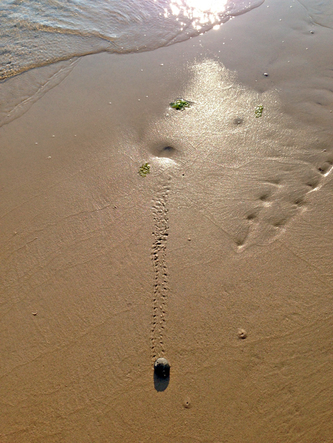
The only thing I take along is my iPhone for its camera and the fitness app that keeps me honest. The iRunner app, which I downloaded for free and can highly recommend records where, when, how far and fast you walk and how many calories are burned up. When the info is locked in and synced, the route is mapped and a little walking figure populates the day on a calendar. There also are action figures for running, biking and other activities, and a Siri-like voice that offers congratulations. (“Workout complete. You rock!”)
The more little figures that lined up across the calendar, the more committed I felt to add days. A month later, I’d look at the parade of walkers in full stride and put on my walking shoes whether I felt like it or not. Soon it was a year of walks, then two years, and now I’m headed toward recording the end of my third year without missing a day.
Fortunately, walking the same route just about every day hasn’t turned routine. Even if you’ve been around the beach all your life like I have, there’s something different every day. The clouds, sky, the sand, the water and the wind, everything changes from one day to the next, and from morning to evening. The water can be crystal clear at times or churned up like chocolate milk at others. I imagine clouds are like snowflakes, no two are the same, and it’s not unusual for some awesome formation to stop me in my tracks.
Aside from the scenery, there’s plenty of opportunity to socialize on beach walks. Walkers not on the clock are happy to stop and chat. Most dog owners are enjoy making small talk while the respective dogs get acquainted. Casual bike riders can hold a modest conversation without losing momentum or having to circling back to finish a thought.
Walking restores my appreciation for our beach and makes me aware of how much work goes into taking care of this wonderful asset. Beach cleanup crews do, in fact, rock.
If you haven’t been walking along the beach in a while—or ever—I would recommend it. You don’t need a dog or an app, and you don’t have to walk all the way to Waveland. But it’s really not that far.
For a mile-by-mile description of the entire beachfront roadway in Hancock County,see our July 2015 Beach to Bayou column by P. Chris Christofferson
Categories
All
15 Minutes
Across The Bridge
Aloha Diamondhead
Amtrak
Antiques
Architecture
Art
Arts Alive
Arts Locale
At Home In The Bay
Bay Bride
Bay Business
Bay Reads
Bay St. Louis
Beach To Bayou
Beach-to-bayou
Beautiful Things
Benefit
Big Buzz
Boats
Body+Mind+Spirit
Books
BSL Council Updates
BSL P&Z
Business
Business Buzz
Casting My Net
Civics
Coast Cuisine
Coast Lines Column
Day Tripping
Design
Diamondhead
DIY
Editors Notes
Education
Environment
Events
Fashion
Food
Friends Of The Animal Shelter
Good Neighbor
Grape Minds
Growing Up Downtown
Harbor Highlights
Health
History
Honor Roll
House And Garden
Legends And Legacies
Local Focal
Lodging
Mardi Gras
Mind+Body+Spirit
Mother Of Pearl
Murphy's Musical Notes
Music
Nature
Nature Notes
New Orleans
News
Noteworthy Women
Old Town Merchants
On The Shoofly
Parenting
Partner Spotlight
Pass Christian
Public Safety
Puppy-dog-tales
Rheta-grimsley-johnson
Science
Second Saturday
Shared History
Shared-history
Shelter-stars
Shoofly
Shore Thing Fishing Report
Sponsor Spotlight
Station-house-bsl
Talk Of The Town
The Eyes Have It
Tourism
Town Green
Town-green
Travel
Tying-the-knot
Video
Vintage-vignette
Vintage-vignette
Waveland
Weddings
Wellness
Window-shopping
Wines-and-dining
Archives
July 2024
June 2024
May 2024
April 2024
March 2024
June 2023
March 2023
February 2023
January 2023
December 2022
November 2022
October 2022
September 2022
August 2022
July 2022
June 2022
May 2022
April 2022
March 2022
February 2022
January 2022
December 2021
November 2021
October 2021
September 2021
August 2021
July 2021
June 2021
May 2021
April 2021
March 2021
February 2021
January 2021
December 2020
November 2020
October 2020
September 2020
August 2020
July 2020
June 2020
May 2020
April 2020
March 2020
February 2020
January 2020
December 2019
November 2019
October 2019
September 2019
August 2019
July 2019
June 2019
May 2019
April 2019
March 2019
February 2019
January 2019
December 2018
November 2018
October 2018
September 2018
August 2018
July 2018
June 2018
May 2018
April 2018
March 2018
February 2018
January 2018
December 2017
November 2017
October 2017
September 2017
August 2017
July 2017
June 2017
May 2017
April 2017
March 2017
February 2017
January 2017
December 2016
November 2016
October 2016
September 2016
August 2016
July 2016
June 2016
May 2016
April 2016
March 2016
February 2016
January 2016
December 2015
November 2015
October 2015
September 2015
August 2015
July 2015
June 2015
May 2015
April 2015
March 2015
February 2015
January 2015
December 2014
November 2014
August 2014
January 2014
November 2013
August 2013
June 2013
March 2013
February 2013
December 2012
October 2012
September 2012
May 2012
March 2012
February 2012
December 2011
November 2011
October 2011
September 2011
August 2011
July 2011
June 2011








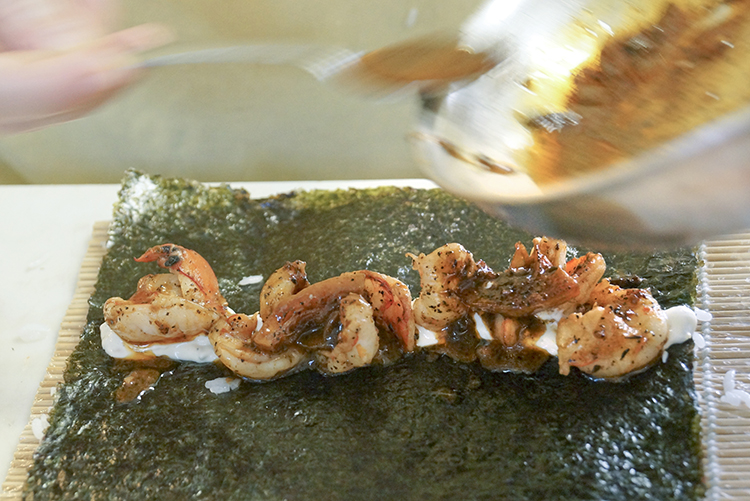


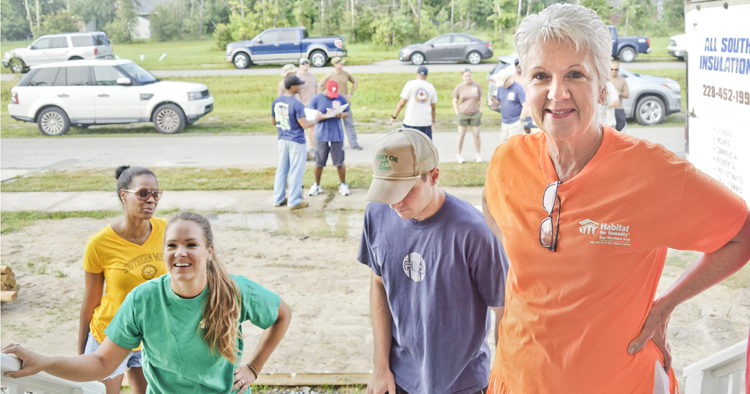











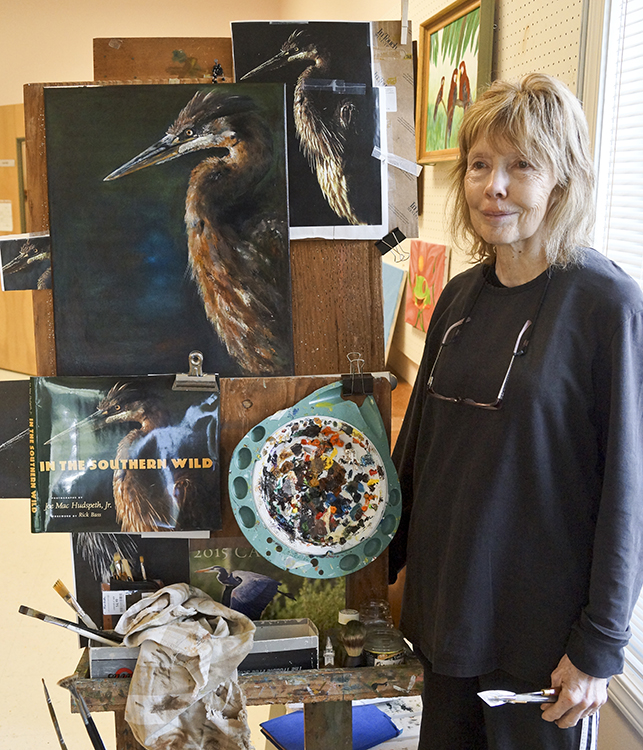
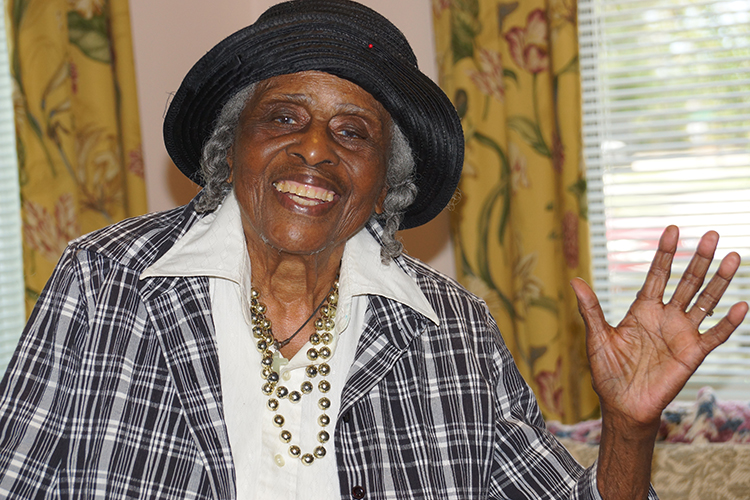

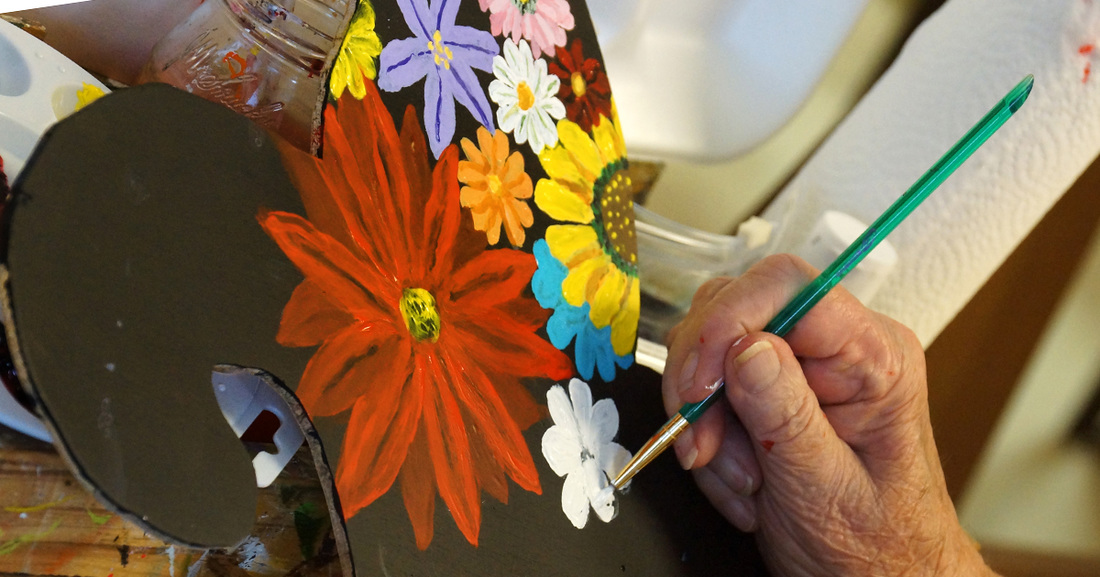

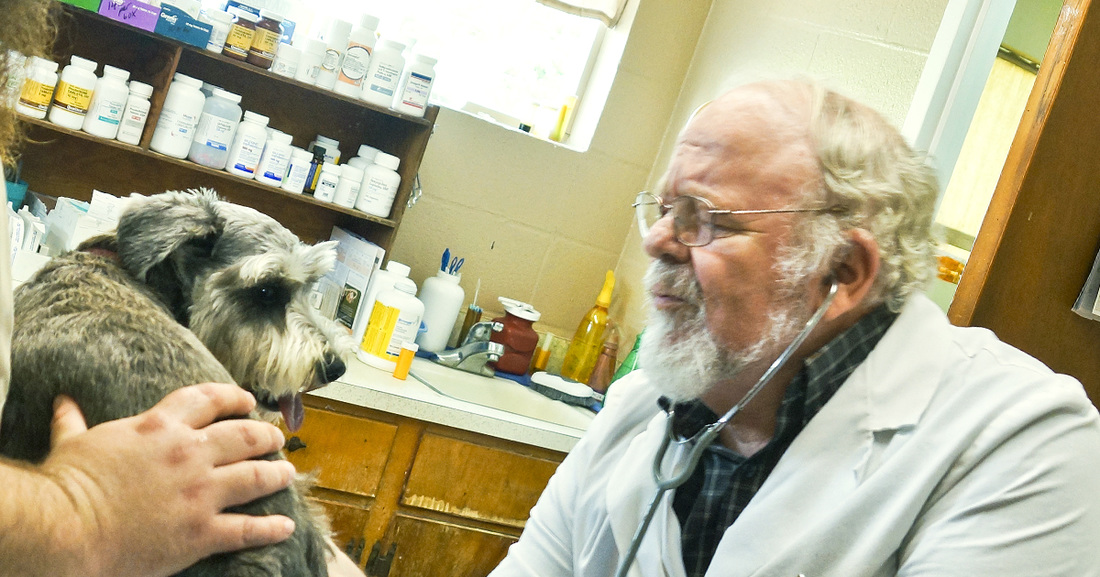
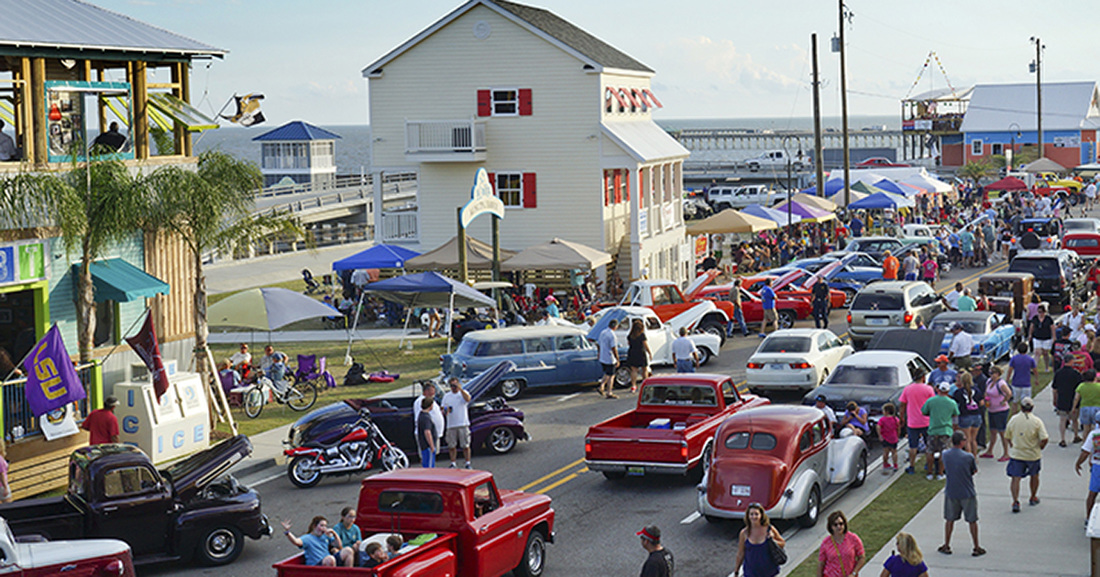






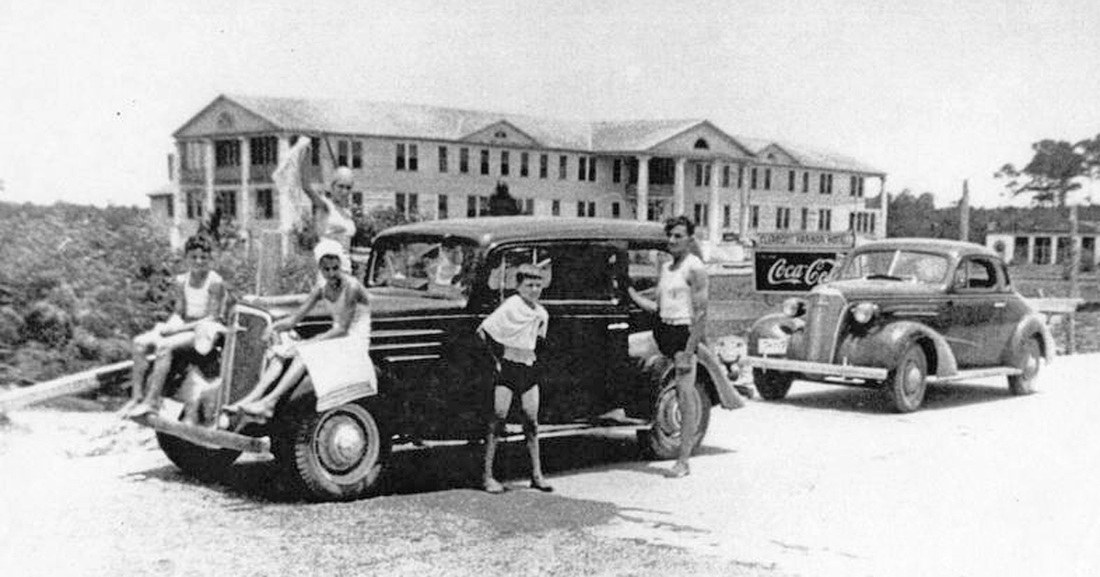


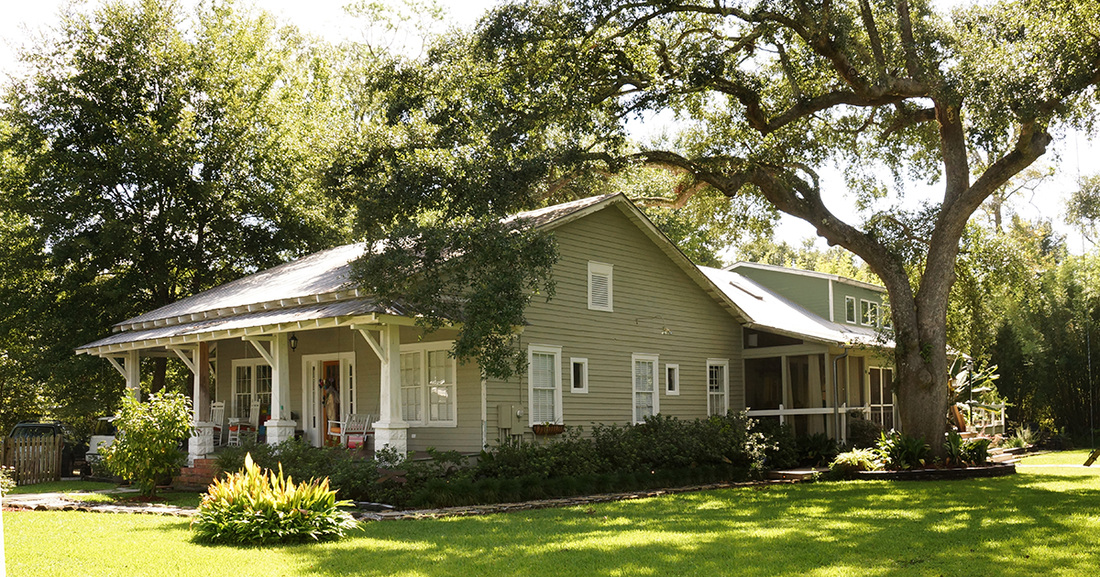

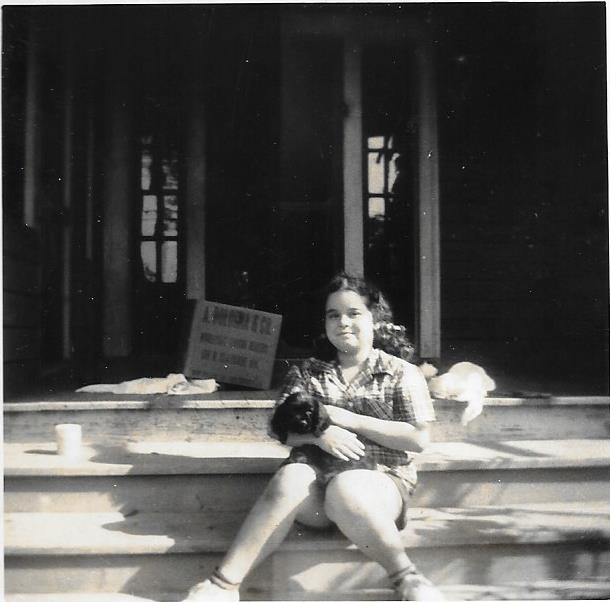
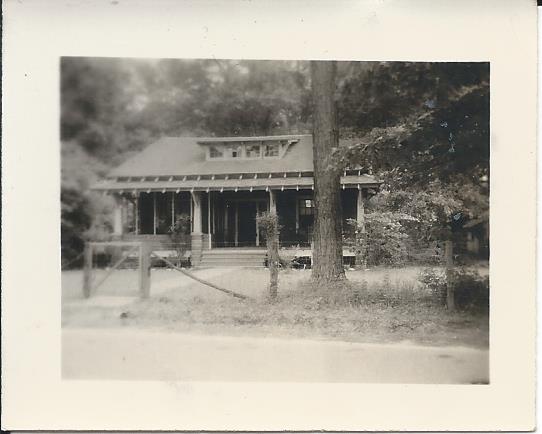
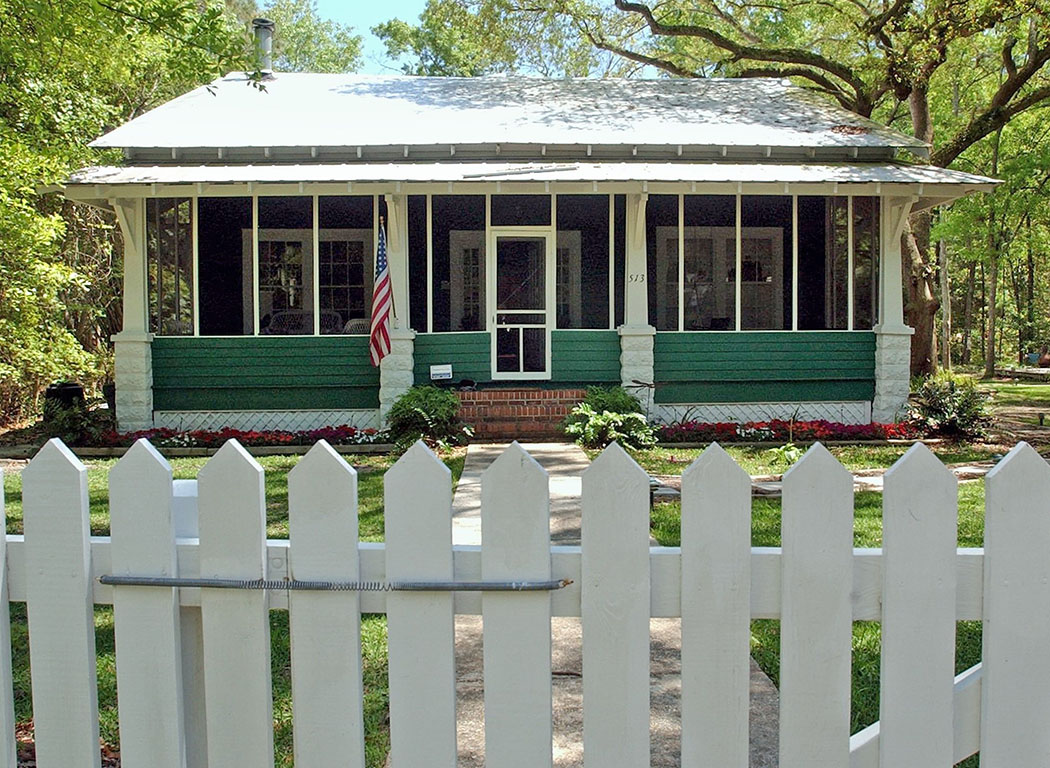
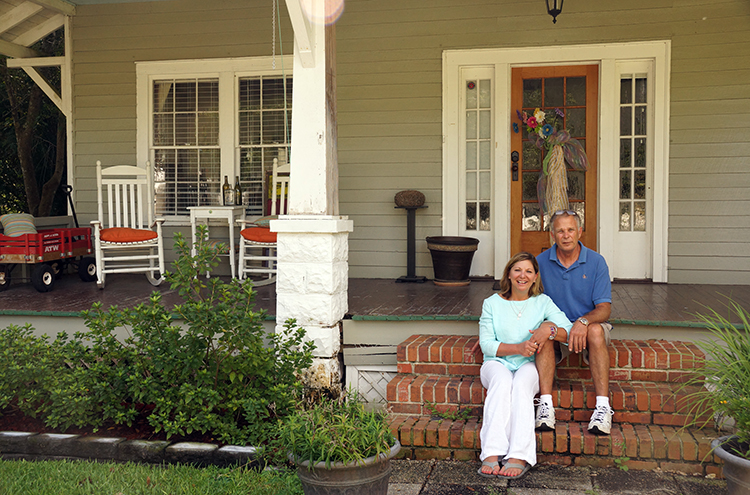

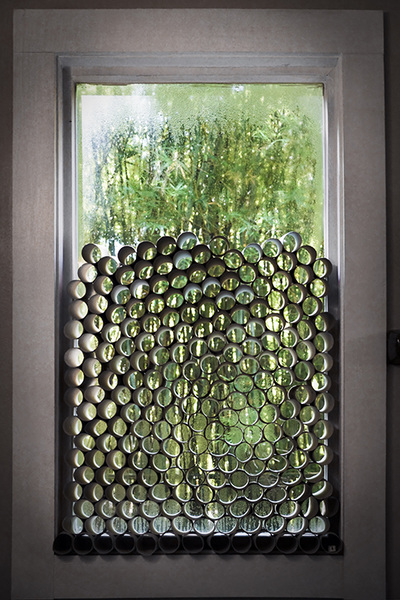

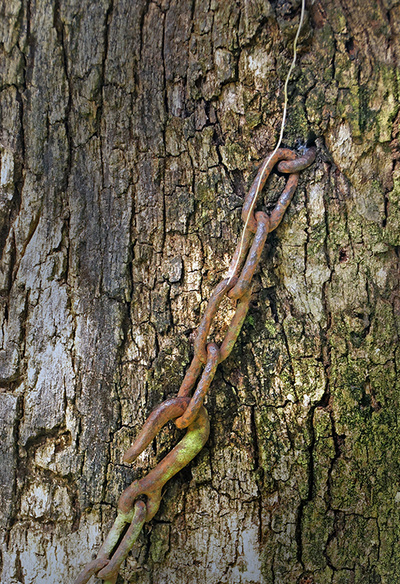

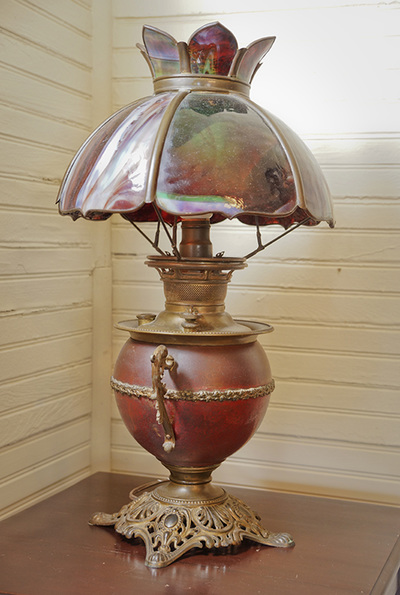




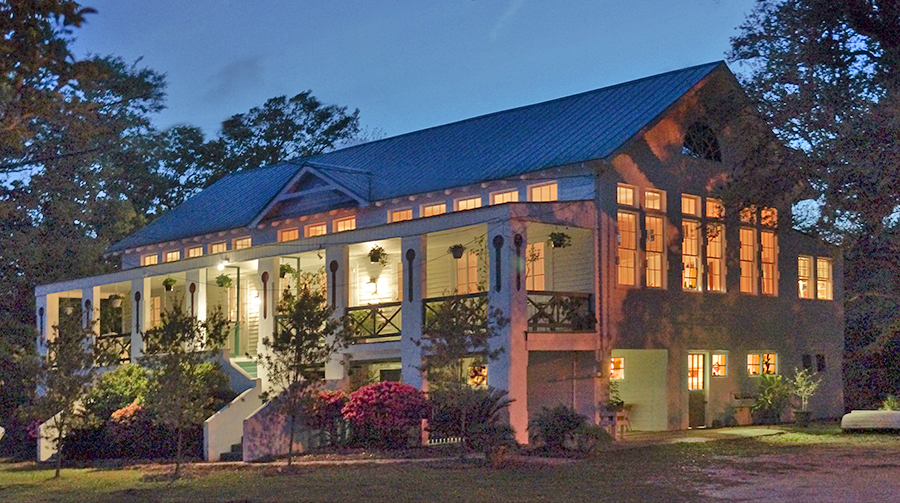




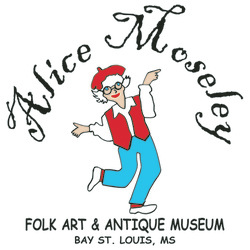





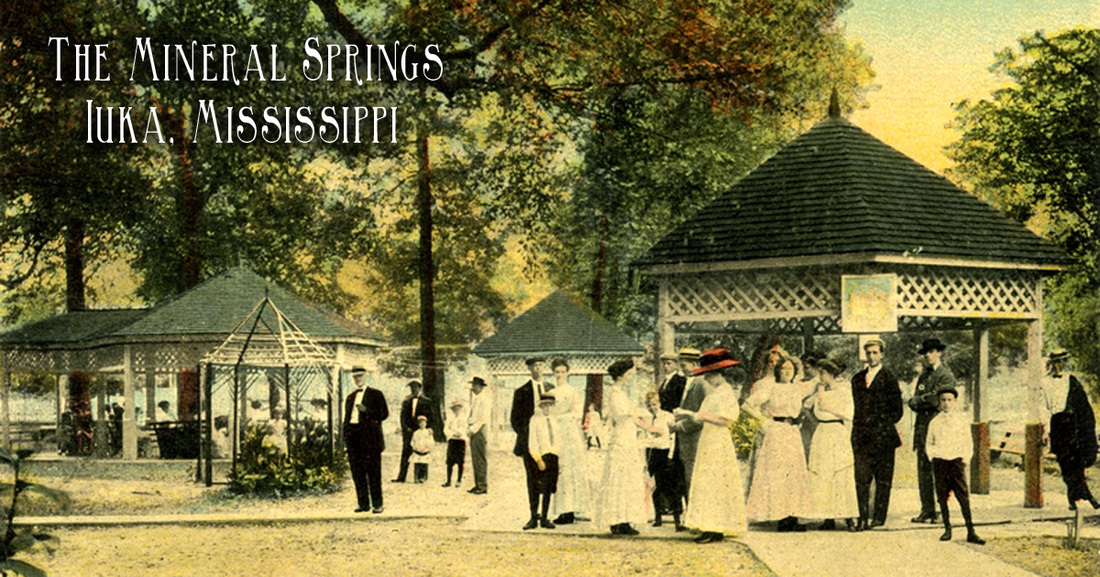







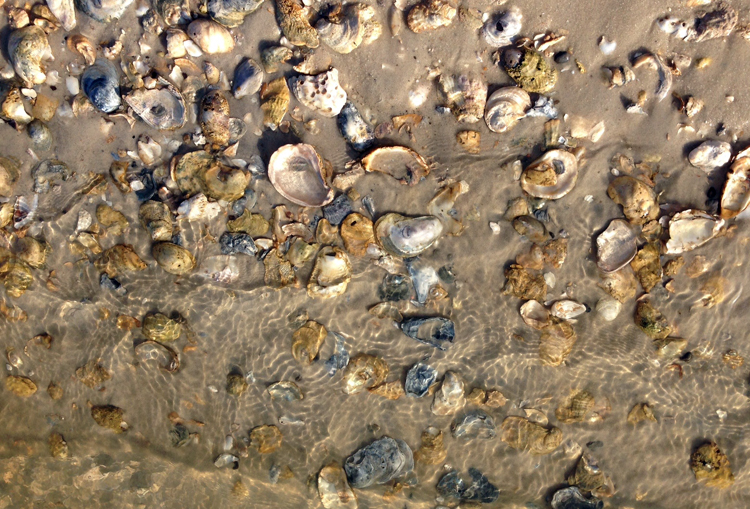
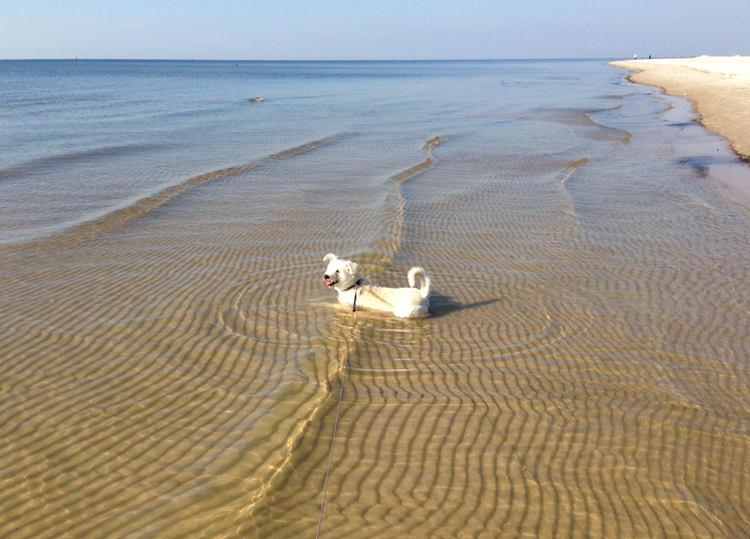


























 RSS Feed
RSS Feed























